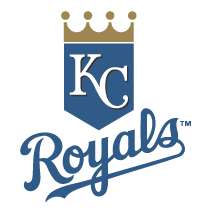Quiz Answer Key and Fun Facts
1. He wore number 5 for 20 years with the Kansas City Royals, he is the Royals fans' collective number one in their hearts. He was the first man to win batting titles in three different decades (1976, 1980, 1990), and is the first player in the Baseball Hall of Fame who played his full career with the Royals. Who is this Royals legend?
2. Making his Major League debut for the Kansas City Royals in 1984, he would quickly become the ace of the staff, helping the Royals win the World Series in 1985, and winning the Cy Young the same year. He would win one more Cy Young in 1989, and pitch a no-hitter for the Royals in 1991. He led the league in wins, complete games, and ERA in 1989. Later traded to the New York Mets in 1991, his best days came in Kansas City. Who was this star pitcher?
3. Originally scorned for stepping into the well-liked shoes of Kansas City Royal Cookie Rojas, he made up for it with an 18-year career with the team, all at second base. He won eight Gold Gloves at the position, was selected to the All-Star team five times, and won an American League Championship MVP Award in 1980. Who was this smooth playing second baseman?
4. The manager of the World Series winners in 1985, this Kansas City Royals manager led the team from 1981 to 1986. Tragically, cancer forced him off the baseball diamond, and he would die of a brain tumor in 1987. Who was this beloved Royals manager?
5. The original owner of the Kansas City Royals, he put as much effort into putting the best possible product on the field as he did in into his pharmaceutical career. He passed away in 1993 and the organization named the stadium after him in his honor the same year. Who is this baseball owner, a man ahead of his time in many facets of baseball?
6. The subject of one of the best trades in Kansas City Royals history, this Royals Hall of Famer was ensconced in centerfield for the bulk of the 1970s. He won three Gold Gloves, made the American League All-Star team four times, and led the American League in stolen bases in 1971. Who was this Royal elected to the Kansas City Royals Hall of Fame in 1986?
7. Originating the newly-formed position of designated-hitter for the Royals, this player spent 15 seasons with Kansas City, mostly off the field except at bat. He has his name attached to the rule where runners must slide into second on double plays, because his football player-like build enabled him to have success cross-body blocking second basemen in order to break up double plays. Who was this long time Royal who got inducted into the Kansas City Royals Hall of Fame in 1989?
8. This speedy Kansas City Royals centerfielder was the second man to hold fort at CF for an extended period of time. Setting the record for most at-bats in a season for 27 years until Jimmy Rollins broke it in 2007, he also led the league in stolen bases in 1979, and would have led many more had Rickey Henderson not been in the American League the same time. Who was this 16-year Kansas City Royal?
9. This Kansas City Royals manager was the skipper behind the Royals first string of success, leading the team to three straight division titles starting in 1976. Meeting with the dynastic Yankees those three years unfortunately led to no World Series appearances, and he was let go in 1979 after a sub-par year. He would later find success across the state in St. Louis with the National League Cardinals. Who was this successful manager who has a managing method named after him?
10. This Kansas City Royals pitcher debuted in 1979, and is often looked at as the original ninth inning closer. With a submarine delivery that had pinpoint control, many 1980s batters hadn't seen this pitching style, much less faced it in the batter's box. Fans would try to beat traffic in the ninth inning once he came in for a five-year span, as he was the closest thing to a sure win. His nickname is a very familiar word to funtrivia enthusiasts. Who was this prototypical closer for the Kansas City Royals?
Source: Author
Spaudrey
This quiz was reviewed by FunTrivia editor
Nightmare before going online.
Any errors found in FunTrivia content are routinely corrected through our feedback system.

